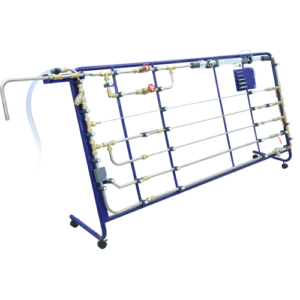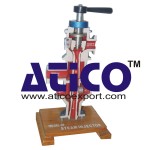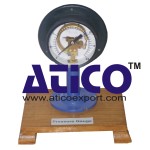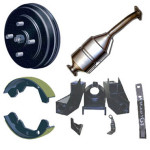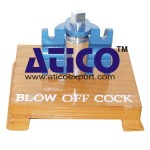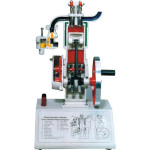Fluid Friction Measurement
The Fluid Friction Measurements unit provides facilities for the detailed study of fluid friction head losses, which occur when an incompressible fluid flows through pipes, fittings and flow metering devices.
Pipe friction is one of the classic laboratory experiments and has always found a place in the practical teaching of fluid mechanics.
With this unit, friction head losses in straight pipes of very different sizes can be investigated over a range of Reynolds’ numbers from10³ to nearly 10⁵. This covers the laminar, transitional and turbulent flow regimes in smooth pipes.
In addition an artificially roughened pipe is supplied, which at the higher Reynolds’ numbers shows a clear departure from the typical smooth bore pipe characteristics.
Instructional Capabilities
Confirming the relationship between head loss due to fluid friction and velocity for flow of water
Determining the head loss associated with flow through a variety of standard pipe fittings
Determining the relationship between pipe friction coefficients and Reynolds’ number for flow through a pipe with roughened bore
Demonstrating the application of differential head devices in the measurement of flow rate and velocity
Providing practical training of pressure measurement techniques
Enhancing understanding of the hydraulic principles involved through the use of complementary computer software
Specification:
A unit for the detailed study of fluid friction head losses, which occur when an incompressible fluid flows through pipes, fittings and flow metering devices
A substantial floor-standing tubular steel frame supports test circuits comprising:
– Four smooth-bore pipes of different diameters ranging from 4.5mm ID to 17.2mm ID
– Artificially roughened pipe
– 90° bends (large & small radii)
– 90° elbow
– 90° mitre
– 45° elbow, 45°Y, 90°T
– Sudden enlargement
– Sudden contraction
– Gate valve
– Globe valve
– Ball valve
– Inline strainer
– Perspex venturi
– Perspex orifice meter
– Perspex pipe section with a pitot tube & static tapping
– 38 tapping points
All fixed pipes fabricated in stainless steel
Suitable for studying Reynolds’ numbers from 10³ to nearly 10⁵
A system of isolating valves, quick-release manometer connection valves and self-sealing pressure tappings ensure fast, accurate results
Data logging accessory available
Computer aided learning program available
A user instruction manual provides installation, commissioning and maintenance data, together with student exercises
The unit is designed for use with a Hydraulics Bench

